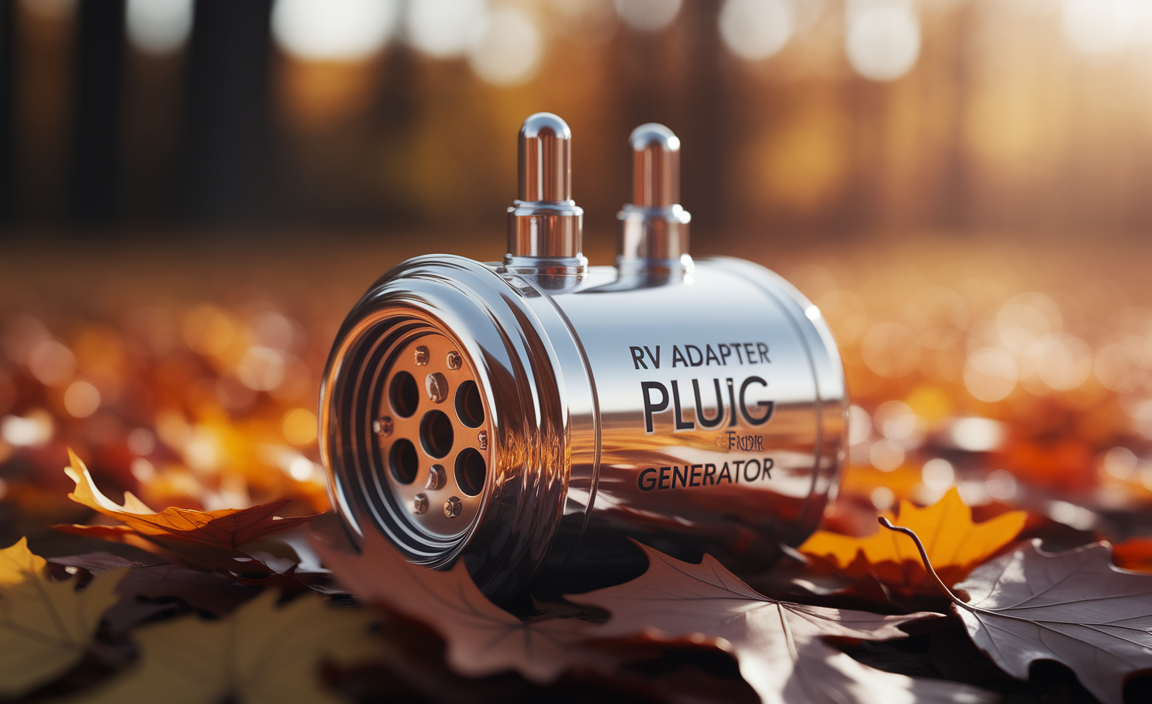A 6-volt battery is crucial for powering older John Deere tractors. Knowing how to identify, care for, and potentially replace it ensures your classic equipment keeps running reliably. We’ll guide you through understanding these essential power sources for your vintage John Deere.
Got an older John Deere tractor humming in your garage or barn? Those classic machines often rely on a specific type of battery to get them roaring to life: the 6-volt battery. If yours is acting sluggish, or you’re just curious about what makes these tractors tick, you’ve come to the right place. It can be a bit puzzling comparing them to the more common 12-volt systems in cars and newer tractors. But don’t worry! We’ll break down everything you need to know about 6-volt batteries for your John Deere, in a way that’s easy to understand. You’ll learn what they are, why they’re used, and how to keep them in top shape. Stick around, and we’ll get your vintage tractor powered up and ready to go!
Understanding the 6-Volt System in John Deere Tractors
You might wonder why some older John Deere tractors use a 6-volt system while most modern vehicles use 12-volt. It all comes down to the technology available when these tractors were designed and built. Back in the day, simpler electrical systems were the norm, and 6-volt batteries were perfectly adequate for starting and running the basic functions of these workhorses.
These older tractors were generally designed with less complex electrical needs. A 6-volt battery could provide enough power to turn over the engine and operate lights and basic accessories without requiring the higher voltage that modern vehicles demand for more sophisticated electronics.
Even though 12-volt systems are more common now, the 6-volt system in these classic John Deeres is reliable and effective for its intended purpose. The key is understanding its unique requirements to keep it performing at its best. Let’s dive into what makes these batteries special.
Why 6-Volt Batteries for Classic John Deeres?
The choice of a 6-volt electrical system in many vintage John Deere tractors wasn’t a matter of being outdated; it was the standard for its time. Here’s why these systems were popular and continue to be relevant for enthusiasts:
- Simplicity: Older tractor designs were less electrically complex. A 6-volt system could easily power the starter motor, lights, and ignition without needing higher voltage.
- Cost-Effectiveness: Historically, 6-volt components were often more affordable to produce and maintain than their higher-voltage counterparts.
- Weight and Size: For the power needed, 6-volt batteries could be designed to be relatively compact and manageable.
- Historical Authenticity: For collectors and restorers, maintaining the original 6-volt system is crucial for preserving the tractor’s historical accuracy and character.
When working with these tractors, it’s vital to remember that they are designed for a 6-volt power source. Using a 12-volt battery or charger inappropriately can cause serious damage, so always be sure you’re using the correct voltage.
Identifying Your John Deere Tractor’s Battery Needs
Before you can care for or replace your tractor’s battery, you need to confirm it’s a 6-volt system. Luckily, there are a few straightforward ways to tell.
Visual Inspection
The most direct way to identify the battery type is to look at the battery itself. Many batteries will have their voltage clearly printed on the label or directly on the plastic casing. Look for numbers like “6V” or “6 VOLT”.
You can also check the tractor’s documentation if you have it. The owner’s manual for your specific John Deere model will clearly state the required battery type and specifications. This is always the most reliable source of information.
Checking Tractor Electrics
If the battery label is unreadable or missing, you can sometimes infer the voltage from the tractor’s electrical components. Older tractors with 6-volt systems might have:
- A single headlight bulb (12-volt systems often have two or more, or brighter single bulbs).
- A starter motor that looks distinctively large and robust, designed for lower voltage but higher amperage starting.
- A generator that is typically much larger than a modern alternator.
However, the most definitive way is to check the battery markings themselves or consult your tractor’s manual. If you’re unsure, it’s always best to ask someone experienced or consult a John Deere dealer or a vintage tractor forum.
Common John Deere Models Using 6-Volt Batteries
Many popular John Deere tractor models from the pre-1960s era were equipped with 6-volt electrical systems. Some notable examples include:
- John Deere Model A
- John Deere Model B
- John Deere Model G
- John Deere 50 Series (e.g., 50, 60, 70)
- Early John Deere 10 Series (e.g., 10, 20, 30)
If your tractor falls into these or similar vintage categories, there’s a very high chance it uses a 6-volt battery. This is why finding the correct replacement is so important for maintaining the tractor’s originality and functionality.
Replacing Your 6-Volt John Deere Tractor Battery: A Step-by-Step Guide
Replacing a tractor battery is a task many DIYers can handle with the right preparation and precautions. Since we’re dealing with a 6-volt system, remember that battery acid is corrosive, and the battery can be heavy. Safety first!
Tools and Materials You’ll Need
Gathering the right tools before you start will make the job smoother and safer. Here’s what you’ll likely need:
- A new 6-volt battery specifically designed for tractor use (ensure it has the correct terminal configuration and size for your tractor).
- Wrench set (likely 1/2 inch or 9/16 inch for battery terminals and hold-down clamps).
- Battery terminal cleaner brush (or a wire brush).
- Rubber gloves.
- Safety glasses.
- Protective clothing.
- Baking soda and water solution (for cleaning acid spills).
- New battery terminals or anti-corrosion spray/grease (optional, but recommended).
- A battery lift strap or a helper (6-volt tractor batteries can be quite heavy).
Safety Precautions
Batteries contain sulfuric acid and can produce flammable hydrogen gas. Always follow these safety guidelines:
- Wear Safety Gear: Always wear safety glasses and chemical-resistant gloves.
- Work in a Ventilated Area: Ensure good airflow to prevent fume buildup.
- No Sparks or Flames: Keep open flames, sparks, and smoking materials away from the battery.
- Avoid Short Circuits: Never let metal tools touch both battery terminals simultaneously or touch the positive terminal to any metal part of the tractor.
- Lift Safely: Use a battery strap or get help to lift the battery to avoid strain or dropping it.
- Handle Acid Carefully: If you spill acid, neutralize it immediately with a baking soda and water solution.
Step-by-Step Replacement Process
Here’s how to tackle the battery replacement, step by step:
- Park and Prepare: Park your tractor on a level surface and shut off the engine. Engage the parking brake.
- Locate the Battery: Batteries are usually located under the hood, on the side, or sometimes near the front of the tractor.
- Disconnect Cables (Negative First!): Using your wrench, loosen the nut on the negative (-) terminal clamp. Remove the cable from the terminal. Then, loosen and remove the positive (+) terminal clamp. This order (negative first) is crucial to prevent accidental short circuits.
- Remove the Hold-Down Clamp: The battery is secured by a clamp or bracket. Unscrew and remove any bolts or nuts holding the clamp in place. Keep these parts safe!
- Remove the Old Battery: Carefully lift the old battery out. If it’s heavy, use a battery lift strap or ask for assistance. Place the old battery aside, preferably in a sturdy box or on a level surface where it won’t tip.
- Clean Battery Tray and Terminals: Inspect the battery tray for corrosion or debris. Clean it thoroughly. Use a battery terminal brush to clean both the battery cable terminals and the new battery terminals until they are shiny.
- Install the New Battery: Carefully place the new 6-volt battery into the battery tray, ensuring it’s oriented correctly so the terminals align with the cables.
- Secure the Battery: Reinstall the hold-down clamp and tighten its bolts or nuts to secure the battery firmly in place. It shouldn’t be able to move.
- Connect Cables (Positive First!): Attach the positive (+) cable to the positive terminal and tighten the clamp. Then, attach the negative (-) cable to the negative terminal and tighten it. Reconnecting the positive first helps prevent sparks when you make the final connection.
- Check Connections: Give both cables a gentle tug to ensure they are snug and won’t vibrate loose.
- Test the Tractor: Start your tractor to ensure the new battery is working correctly. Listen for a strong, healthy engine crank.
- Dispose of Old Battery Properly: Take your old battery to an auto parts store, recycling center, or a hazardous waste disposal facility. Batteries are recyclable and should never be thrown in the regular trash.
Congratulations! You’ve successfully replaced your John Deere tractor’s 6-volt battery.
Maintaining Your 6-Volt Tractor Battery for Longevity
Just like any battery, a 6-volt tractor battery benefits from regular care. Proper maintenance can significantly extend its life and ensure your tractor starts reliably when you need it.
Regular Cleaning
Batteries can accumulate dirt, oil, and corrosion, especially in the harsh environment of a tractor. Keep the top of the battery clean.
- Periodically wipe down the battery case with a clean, damp cloth.
- If you see white, powdery corrosion on the terminals or cables, clean it off using a mixture of baking soda and water. You can use an old toothbrush or a specialized battery terminal brush for this. Rinse with clean water and dry thoroughly.
Clean terminals ensure a good electrical connection, which is vital for efficient charging and power delivery.
Checking Fluid Levels (If Applicable)
Many 6-volt tractor batteries are “flooded” or “wet” cell batteries, meaning they have removable caps that allow you to check the electrolyte (water and acid) level. This applies to serviceable batteries, not sealed maintenance-free types.
- If your battery has these caps, check the fluid level about once a month, especially during heavy use or hot weather.
- Use only distilled water to top up the cells if the level is low. Never use tap water, as it contains minerals that can damage the battery.
- Fill each cell just enough to cover the plates, typically about 1/4 to 1/2 inch above the visible plates.
- Ensure the caps are tightly replaced after checking or filling.
Low electrolyte levels can damage the battery plates and reduce its capacity. For more information on battery care, you can refer to resources from The Battery University, a great resource for all things battery-related.
Ensuring a Secure Connection
Loose battery cables are a common cause of starting problems. Vibrations from the tractor engine can cause terminals to loosen over time.
- Regularly check that the battery terminals are tight.
- Apply a thin layer of dielectric grease or an anti-corrosion spray to the terminals after cleaning and tightening to prevent future corrosion.
Proper Charging
If your tractor sits for extended periods, the battery can lose its charge. Using the correct charger is essential.
- Use a 6-Volt Charger: Never use a 12-volt charger on a 6-volt battery. This will quickly damage the battery.
- Automatic Chargers: Consider using an automatic “smart” charger designed for 6-volt batteries. These chargers monitor the battery’s charge level and stop charging when it’s full, preventing overcharging.
- Avoid Overcharging: Even with a manual charger, don’t leave it connected for excessively long periods unless it’s specifically designed for continuous maintenance charging.
Protecting from Extreme Temperatures
Extreme heat and cold can affect battery performance and lifespan.
- Heat: Prolonged exposure to high temperatures can accelerate internal corrosion and water loss. If possible, store your tractor in a cooler location during very hot weather.
- Cold: Cold weather reduces a battery’s cranking power. A partially discharged battery is even more susceptible to freezing. Ensure your battery is well-charged, especially before cold weather arrives.
Troubleshooting Common 6-Volt Battery Issues
Even with good maintenance, you might encounter problems with your 6-volt tractor battery. Here are a few common issues and how to address them.
Weak Cranking or No Start
This is the most classic sign of a battery problem. If the engine cranks slowly or not at all:
- Check Connections: First, ensure the battery terminals are clean and the cables are securely tightened. Loose connections are often the culprit.
- Test Battery Voltage: Use a voltmeter to check the battery’s voltage. A fully charged 6-volt battery should read around 6.3 to 6.5 volts when the tractor is off. If it’s significantly lower, the battery may be discharged or bad.
- Consider a Load Test: A simple voltmeter test only shows static voltage. A battery load tester, available at most auto parts stores, can tell you if the battery can hold a charge under load (like when starting the engine).
- Check for a Blown Fuse: Less common for starting issues, but worth checking if your tractor has a fuse box for other accessories.
Corroded Terminals
As mentioned in maintenance, corrosion can impede electrical flow. If terminals are heavily corroded:
- Clean Thoroughly: Disconnect both cables (negative first), then use a battery terminal brush and a baking soda/water paste to scrub away all corrosion from the terminals and cable ends.
- Rinse and Dry: Rinse with clean water and dry thoroughly.
- Apply Protectant: Once clean and reconnected, apply a dielectric grease or anti-corrosion spray.
Leaking Battery
If you spot acid leaking from the battery case:
- Immediate Action: This is a serious issue. Carefully contain the leak if possible and wear protective gear. Clean up any spilled acid immediately with the baking soda and water solution.
- Replace Immediately: A leaking battery is usually damaged beyond repair and poses a safety hazard. It needs to be replaced as soon as possible. Handle the old battery with extreme care.
Battery Not Charging
If your tractor has a generator and the battery isn’t charging (indicated by a battery/charge light or low voltage readings while running):
- Check Generator Belt: Ensure the fan belt driving the generator is tight and in good condition. A loose belt won’t turn the generator effectively.
- Inspect Generator: The generator itself might be faulty, or the voltage regulator (if equipped) could be malfunctioning. This might require a mechanic.
- Check Wiring: Loose or corroded wires between the generator, regulator, and battery can prevent charging.
For issues beyond simple connections and cleaning, it’s always wise to consult your tractor’s service manual or a qualified mechanic specializing in older farm equipment.
Alternatives and Considerations for 6-Volt Systems
While sticking with the original 6-volt system is often preferred for authenticity, some owners consider alternatives, especially if finding parts or reliable 6-volt batteries becomes difficult. However, it’s crucial to understand the implications.
Converting to 12-Volt
It is possible to convert a 6-volt tractor to a 12-volt system. This typically involves replacing the starter, generator/alternator, voltage regulator, light bulbs, and the battery. This is a significant modification:
- Pros: Easier to find 12-volt replacement electrical components, brighter lights, potentially more reliable starting.
- Cons: Can be expensive, alters the tractor’s originality, requires significant electrical work, potential for unintended consequences if not done correctly.
Most enthusiasts who restore vintage tractors prefer to keep them in their original 6-volt configuration to maintain historical integrity. Conversions are usually for tractors intended for heavy-duty work where original parts are scarce and reliability is paramount.
Battery Types for 6-Volt Systems
When purchasing a new 6-volt battery, look for types



